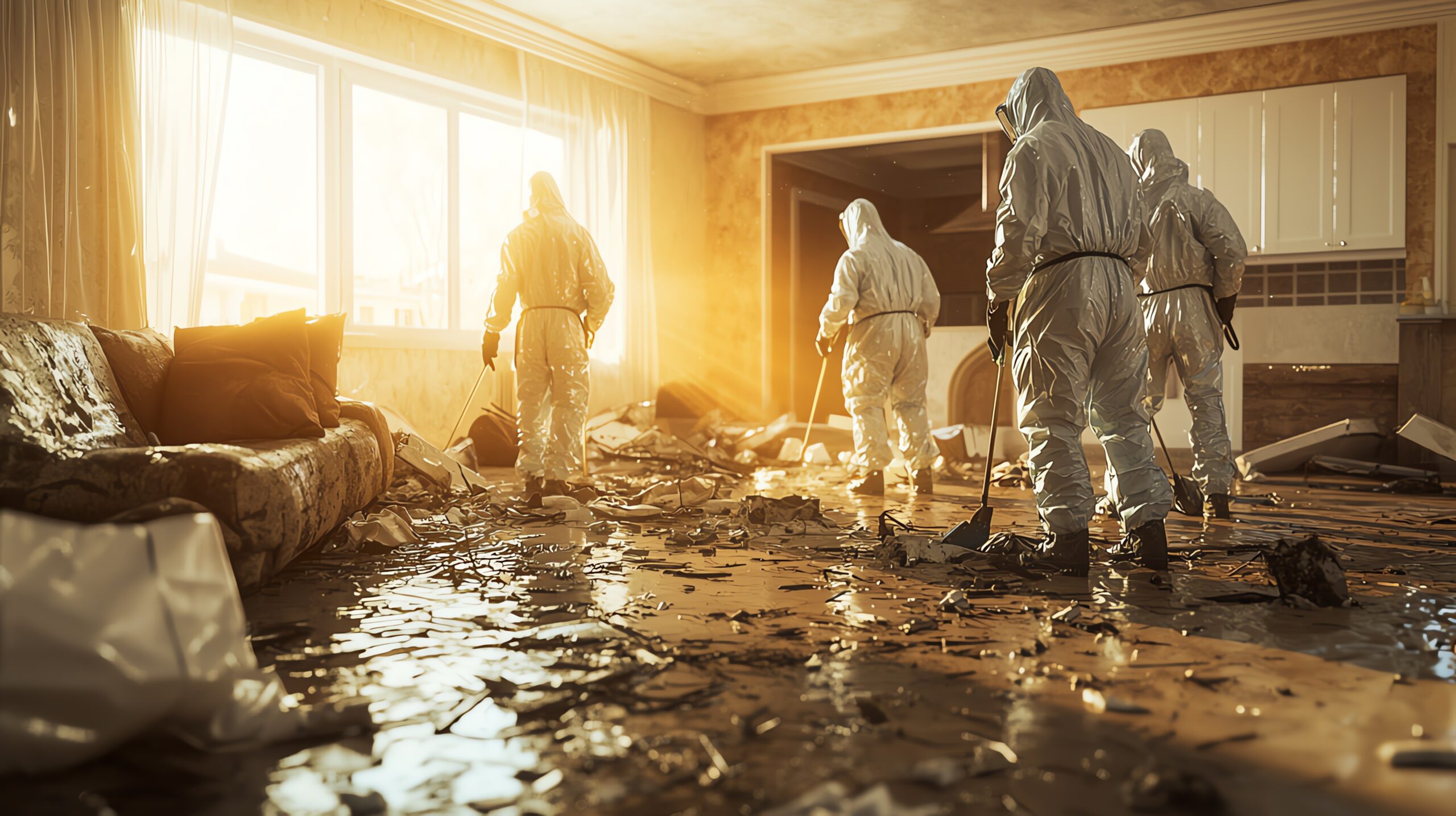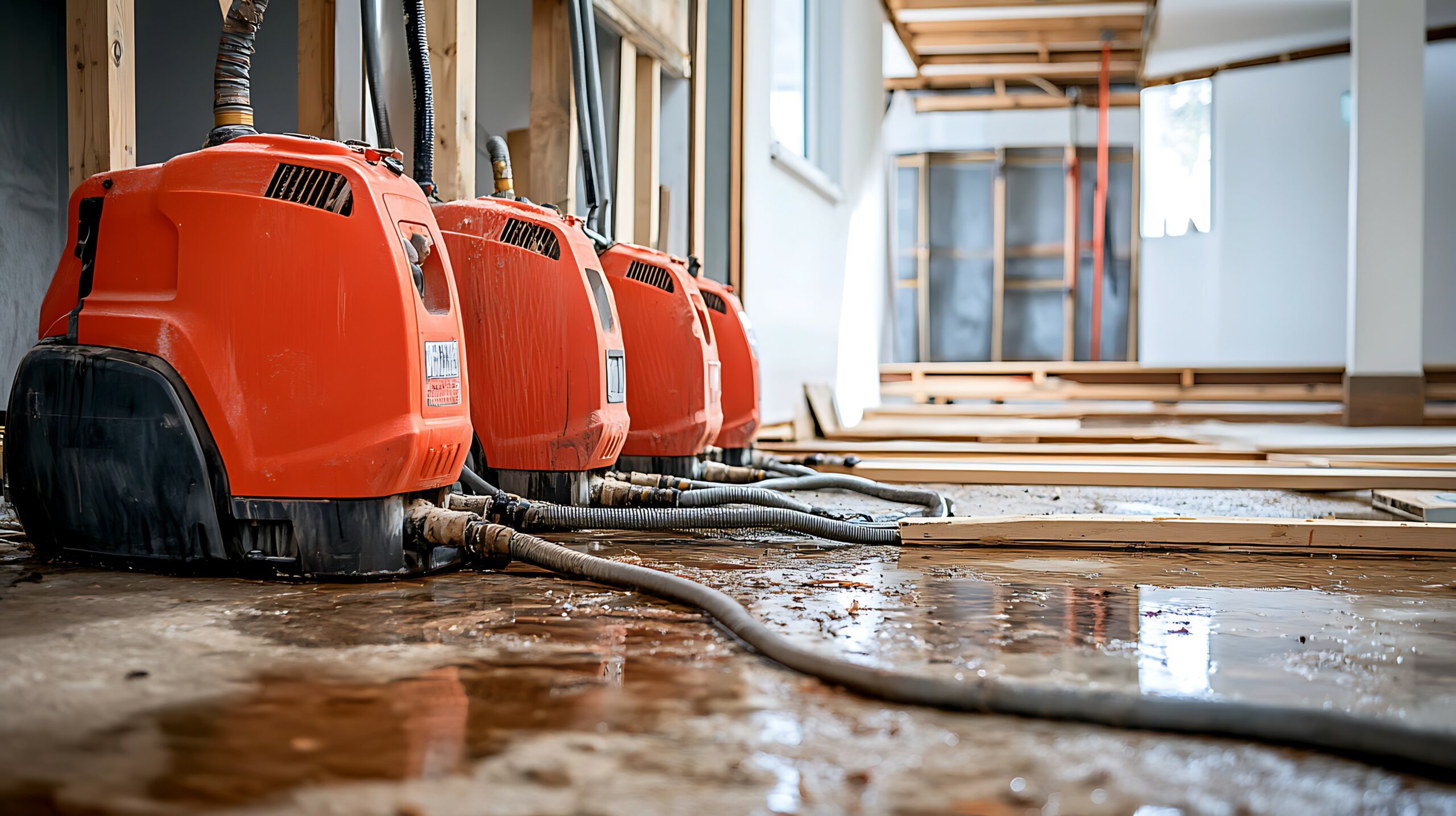Water is remarkably sneaky when it wants to be. One minute you are perfectly content – the next minute you are ankle deep in the stuff, staring at the soggy mess that used to be your favorite rug. That said, finding the best way to remove water from house disasters isn’t just about mopping till your arms fall off. What you really need is smart, decisive action.
At WetReset, we’ve been called to homes where folks thought they could just “tough it out” with towels and hope for the best. The problem with that approach is that water wins every time. In this blog post, we shall talk about flood water removal solutions that actually work.
Immediate Steps After Water Intrusion
Before we address the best way to remove water from the house in practical, hands-on terms, we should make something very clear: time is of the essence when it comes to water damage in the home. Every second counts, literally.
The longer you delay the house water extraction process, the more likely you are to clock up a restoration bill in the thousands. With that in mind, follow the steps below to get a firm grip on the issue before commencing with solutions.
Ensure Safety First (Turn Off Electricity)
Cut the power at your main panel. Water and electricity play about as well together as oil and, well, water. If your feet are already taking a bath, don’t become a human conductor. Call an electrician to handle the shutdown.
Some homes have their panel in the basement. This is a great placement when there’s no flood, but it’s terrible when there is. If water’s already there, stay out. Your insurance company won’t mind waiting an extra hour for photos if it keeps you from becoming tomorrow’s cautionary tale.
|
Pro tip: Know where your circuit breaker lives before disaster strikes. Practice flipping it off during dry times. When water is rushing in, muscle memory beats frantic googling every single time. |
Identify and Stop the Water Source
Finding where water is coming from can feel like a perverse game of hide-and-seek. Is it the toilet? Pipes? Under the floorboards? Start with the most obvious suspects first – toilets account for nearly 20% of home floods, and they are usually pretty obvious sources.
For pipes, hit the main shutoff valve. Most homes have this near where the main water line enters—usually the front of the house, sometimes in the basement. If you rent, your landlord should have marked this during your walkthrough. If not, find it now, before you need it.
Sometimes the source isn’t inside at all. One family we helped recently thought they had a plumbing disaster until they realized their gutters had backed up and dumped an entire week of Pacific Northwest rain through their window.
When water damages your property, don’t wait. Contact WetReset immediately for emergency water damage repair solutions. Every minute counts in preventing permanent damage.

Best Methods for House Water Extraction
Now comes the heavy lifting part. Different situations need different approaches. Mass flooding calls for industrial solutions, while minor incidents respond well to basic household tools. The trick is knowing which method fits your specific disaster.
Manual Water Removal
For smaller flood water removal and water leaks, manual removal can be surprisingly effective. Start with the basics: mops, absorbent towels, and buckets. This old-school approach works for minor spills and small bathroom floods.
A standard bucket holds about 5 gallons, and a flooded kitchen might contain 50+ gallons. That’s math that works – assuming you are patient. Keep dedicated “emergency buckets” clean and ready.
Disposal matters more than most people think. That water you’re bucketing might contain sewage, chemicals, or debris. Pour it down storm drains, not back into your plumbing system. Many municipalities have specific disposal requirements for floodwater, so it’s best to check local rules before creating new problems.
Pumping Out Flood Water
When water is winning the volume game, submersible pumps become your best friend. These workhorses sit in water and push it out through hoses, with some capable of moving up to 3,000 gallons per hour.
Choosing the right pump matters, however. Electric pumps need nearby outlets (hopefully above water level), while gas pumps work anywhere but create carbon monoxide. Never use them indoors. Battery-powered pumps offer portability but limited runtime.
Rental costs range from $50 to $ 100 daily for decent submersible pumps, which is cheaper than replacing water-damaged flooring. Most hardware stores stock them year-round; during flood season, call early.
|
Pro Tip: Always use a hose rated for the pump’s capacity. Too small? Pressure builds up, and things go boom. Place the pump in the deepest water area for maximum effectiveness. |
Drying and Dehumidifying After Water Extraction
Here’s where many DIY attempts fail. Let’s say you have pumped out gallons of water, which might feel like a win at first thought. But what about the water hiding in walls, under floors, and in carpets? This invisible moisture can (and probably will) lead to types of house mold, which is a fate best avoided, for multiple reasons.
Commercial dehumidifiers remove 50+ pints of moisture daily from the air, while consumer models can handle around 30 pints. In serious flood situations, you’ll need multiple units running 24/7. Position them strategically. One per 500 square feet is a decent rule of thumb.
Air movers work alongside dehumidifiers to speed drying. They push air across wet surfaces, breaking the boundary layer that keeps moisture trapped. For maximum effectiveness, place them at 45-degree angles to walls.
Temperature matters too. Warm air holds more moisture than cold air. If possible, turn the heating up slightly while running dehumidifiers. Just don’t create a sauna in the process. Generally speaking, 70-80°F hits the sweet spot. Track humidity levels with a hygrometer. You’re aiming for under 50% relative humidity to prevent mold growth.
Hiring Professional Water Extraction Services
Sometimes, you simply have no option but to call in the cavalry in the form of professional water damage restoration and removal services. But when is the tipping point between DIY and dialing for emergency water removal solutions? Let’s take a look at the following considerations:
Benefits: Fast, Thorough Removal and Drying
Professional services typically arrive within hours, not days, and at Wet Reset, we have a 24/7 emergency response team on hand. We have seen every flooding scenario imaginable.
Our speed and advantage come from manpower and gear. While you’re wrestling one pump and wondering if that wall feels soggy, we could be deploying truck-mounted extractors pulling 500 gallons per minute – water removal that would take you days happens in hours.
Further to that – and this is very much worth mentioning – documentation expertise saves headaches later. Insurance companies love professional water damage reports. Photos, moisture readings, and detailed damage assessments are all things that are hard to fake or forget when dealing with emergency water removal solutions.

Equipment Used: Truck-Mounted Extractors, Industrial Dehumidifiers
Truck-mounted extractors are nothing short of beasts. They park outside and weave massive hoses through windows or doors, boasting incredible vacuum power.. Where portable pumps move gallons per hour, truck mounts handle gallons per minute.
Industrial dehumidifiers are rated for thousands of square feet, not hundreds. Some use desiccant technology (basically giant sponges) to pull moisture from the air more aggressively than refrigerant types. This is perfect for stubborn moisture behind walls or concrete floors.
Thermal cameras are something we value as a water removal tool. Able to see temperature differences, they indicate moisture problems invisible to the naked eye. Wet areas appear cooler due to evaporation.
Preventing Secondary Damage (Mold, Warping)
Your flood might be done, but its aftereffects are just warming up. Secondary damage often costs more than initial water removal. Wood warps. Mold grows. Metal corrodes. Either way, prevention beats cure every time.
Importance of Drying Within 24-48 Hours
Mold spores exist everywhere, but if you give them moisture for 24-48 hours, they throw a multiplication party. The EPA’s mold guidelines suggest starting to dry immediately, aiming to finish within 48 hours. These aren’t mere arbitrary suggestions – they are based on countless studies showing mold’s growth timeline.
Materials absorb water differently. Carpet pad soaks up liquid like a willing sponge, often requiring replacement even after professional drying. Hardwood floors cup and crown when moisture penetrates. Drywall literally crumbles from the inside out if saturation goes deep enough.
One elderly couple we worked with recently thought they’d beaten their flood by mopping diligently for three days. Six weeks later, black mold colonies covered their basement wall studs. The remediation cost triple what immediate professional drying would have been. Heartbreaking stuff.
Checking Hidden Spaces Like Wall Cavities and Subfloors
At risk of stating the obvious, water flows. It drips, seeps, and travels through paths of least resistance. Your living room might look dry while your walls harbor gallons of trapped moisture. Similar scenarios play out under floors, inside cabinet bases, and along ceiling joists.
Wall cavity checking requires cutting exploratory holes—usually 2-inch squares near baseboards. It’s not pretty, but it’s necessary. Professional moisture meters with deep-reading probes can verify dampness without cutting, but severe floods usually need visual confirmation.
Subfloor inspection might mean lifting carpet, tile, or hardwood sections. Yes, it’s disrupting, but discovering rot after covering everything back up is frankly devastating.

When to Call Professionals
Now, reading these methods might give you DIY confidence, but recognizing your limits can save a huge amount of money and prevent bigger disasters. The fact is, some flood situations simply need emergency water removal solutions from experienced pros.
Situations Requiring Professional Help
Category 3 water, which represents sewage backups, river flooding, or contaminated flood water, certainly isn’t DIY territory. Only professional equipment and training can handle biohazards safely. Contaminated water carries pathogens that cause serious illness, and your shop vacuum wasn’t designed for this.
Structural damage crosses another threshold entirely. Sagging ceilings, buckling floors, or compromised walls need expert assessment. DIY drying won’t fix structural issues, and ignoring them leads to catastrophic failures.
Hidden water leaks that hide behind walls also demand professional detection. Thermal cameras, acoustic equipment, and moisture meters pinpoint sources without demolishing half your house.
Cost Considerations
Professional flood water removal varies widely. In most cases, you can expect to pay between $1,000 and $4,000 for typical homes, with $10,000+ for severe situations. You would be forgiven for thinking that sounds expensive, but when considering the alternatives (such as rebuilding sections of your home), the cost isn’t bad in the grand scheme of things.
Emergency services cost more than scheduled work. Weekend rates, after-hours calls, and crisis-level damage drive prices up. But waiting for normal business hours while water multiplies damage is a false economy. Time literally equals money in water damage scenarios.
|
Download our free Emergency Flood Action Guide to stay prepared for water disasters and know the steps before chaos strikes. |
Bottom Line on House Water Extraction
Again, water doesn’t wait, and neither should your response time. Finding the best way to remove water from house disasters starts with a full and immediate grasp of the situation’s scope. Minor incidents respond well to swift DIY action. Major flooding, on the other hand, demands professional expertise.
Always consider prevention before resorting to managing house water extraction. Fix gutters, maintain appliances, and know your shutoff locations. The best flood water removal strategy is to prevent water entry altogether. But when prevention fails – and eventually, something always does – quick, appropriate action minimizes damage.
Ready to tackle your water disaster properly? Contact WetReset for immediate professional water extraction consultation.



